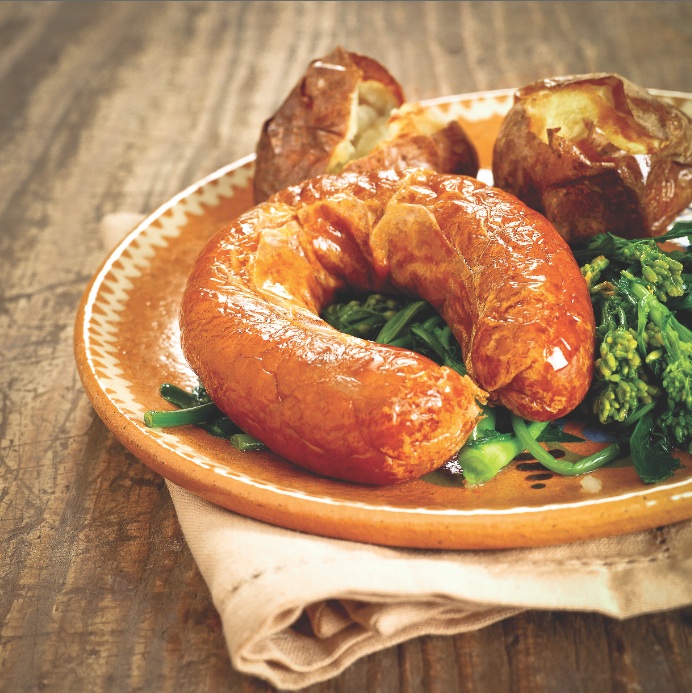Food Stories
Come with us and learn about some Portuguese culinary stories
Sopa da Pedra – Stone Soup – The most famous soup of Ribatejo in the Centre of Portugal
The Fable of Stone Soup is a bit scattered throughout the world, differing in the protagonists. However, always associated with a life lesson about the shortage, persistence and solidarity. In Portugal the “stone soup” was recorded in the late nineteenth century by the hand of Teófilo Braga in the book Traditional Tales of the Portuguese people. Legend has it that a monk with great cunning convinced a farmer to make your rich broth with a rock collected from the ground. For nearly half a century was the city of Ribatejo Almeirim we did spend the broth of fiction for a very rich and famed soup. Reportedly, it all began in the mid- twentieth century, when the owners of a small grocery store that really liked to hang out with their suppliers would have invited some of his friends for lunch before going travelling. The soup served was robust and well garnished with beans and sausages, and so they are much appreciated. Later would have been friends asking again as dark good soup, as dark as the stones of the street, and it was this imaginative comparison that helped christen the famous ” Stone Soup “.
“Alheira de Mirandela – Jewish sausage” – Famous portuguese sausage, made with meat and bread, except pork.
Concerning the Alheira or Jewish sausage the Abade de Baçal said: “… the need to help wit and fruit of persecution that were permanently targeted by the Inquisition in the fifteenth century, the Jews can not eat pork, by imposition of their faith, invented one filled that although similar to that at the time, were hearty dish of the people, not to take the forbidden meat… ”
Thus was born the sausage, the Abbot called Jew sausage and other called smoked sausage of resistance, arises the need of Jews and supposedly newly converted, pretending to eat the traditional filled Christians. This is a story told and until new theory of confirmation for further clarification or greater doubts.
To convince us!
The origin, there remain doubts, born in border area – Terra Fria Transmontana those of Bragança and Mirandesa are genuine, with the fame of Bragança, just because there embarked for the city of Porto to reach further, to the rest of the country.
“Tipas à moda do Porto” – Typical dish of Oporto in the North of Portugal
a dish that stands out for its history. Gives its name to the townsfolk – Tripeiros. This dish is celebrated not so much for cooking but more the attitude of the people of Puerto donation. The popular version, which has more defenders, originates in the great adventure of the Discoveries, in which a native son, the Infante D. Henrique, needing meat to fuel their caravels to conquer Ceuta in 1415, have asked people to help in the supply of vessels. The people rushed to the call of their Prince and his soon filled in the required quantity wooden barrels with salted meat, leaving only the people with the guts who cooked thick stew with sausages and meat fat. At the time the stew was served with slices of dark bread, only later have been added the white beans, the conquest of new worlds, which also originated in the same man meat that filled the holds of their caravels. The dish was for the history of a city that sees itself not only in this succulent delicacy of aromas of cumin and black pepper, seasoned with homemade sausages and smokehouse chicken fat, but especially in the gesture and delivers one of the highlights of the Portuguese nation. This ex – libris of the city’s cuisine. More than a recipe, and this also represents the spirit of the people of Northern attitude: donation, availability and hospitality.
“Pudim Abade de Priscos” – Typical sweet of Braga in the North of Portugal
ícon of Braga confectioner, is known for first publication in 1928 by Fibronia Mimoso revenue. It was one of the few recipes that Manuel Joaquim Machado Rebelo, better known as Abbot of Priscos, transmitted, albeit with the following observation: “impossible to give you my recipes with the fingers of my hands and taste of my tongue. The cuisine is a fine art, but much depends on the artist. “. To prove that the bold Abbot launched the challenge of making a pudding along with the cook of the Palace, where both would use the same ingredients. The dispute gave opposite results, with advantage to the Abbot, it is certain that we were all to win because they got to know the recipe so famous pudding and Interdict for vegetarians!
“Ovos-moles de Aveiro”- Typical Sweet of the Centre of Portugal
one of the many sweets born in the religious environment. In convents besides receiving ladies for reasons of religious order, also received affluent girls and ladies who could not find marriage to the height of his social position. With good skills and their handmaidens came and stood there. Then would be the handmaidens that with all the time in the world, sensitivity and boldness knew “mate” with other ingredients elite to spare: the sugar and egg yolks supposedly left over from the light used to iron nuns’ habits. In Aveiro, the Dominican convent of Jesus, founded in the fifteenth century, the recipe of sweet will have been prepared with great commitment and obligation, as the culinary disputes were between large institutions. Earned him the distinction between too sweet and the same when the extinction of the religious orders, who began the secularization of this and other recipes. To always be recognized specialty and delicacy of pure delight.
“Bacalhau à Margarida da Praça” – Typical dish of Viana do Castelo in North of Portugal
Codfish is the product that makes the Portuguese cuisine famous in the world. Interestingly, that it’s not a own product, it´s comes from the seas of Norway but the technique invented to preserved the product is Portuguese – dry and salty, becomes the only one in the world. A legend said that has in Portugal more than 1001 ways of cooking codfish, “the Margarida Square” is one of them. A typical recipe from Viana do Castelo, one city of Minho in the North of portugal, the most lavish region prescription cod. It is said that at the port of Viana do Castelo has been, since the fourteenth century, the port of discharge privilege of cod. Makes sense, coming from the northern seas, is the first port in Portuguese territory. The instructions for cooking the cod had input and only in the nineteenth century is that it becomes a must in cookbooks. Interestingly it is from this same century that installs potato consumption in Portugal. It is assumed, therefore, that there are two additions to the cod, which seem to have always existed: the potatoes and olive oil! The “Codfish Margarida da Praça“, is the first recipe of a restaurant in Viana do Castelo name´s Margarida da Praça. It consists of a roasted cod goes for a dip in boiling water. Put up slices of boiled potato in a deep dish and on top the cod that then is covered with an onion.

